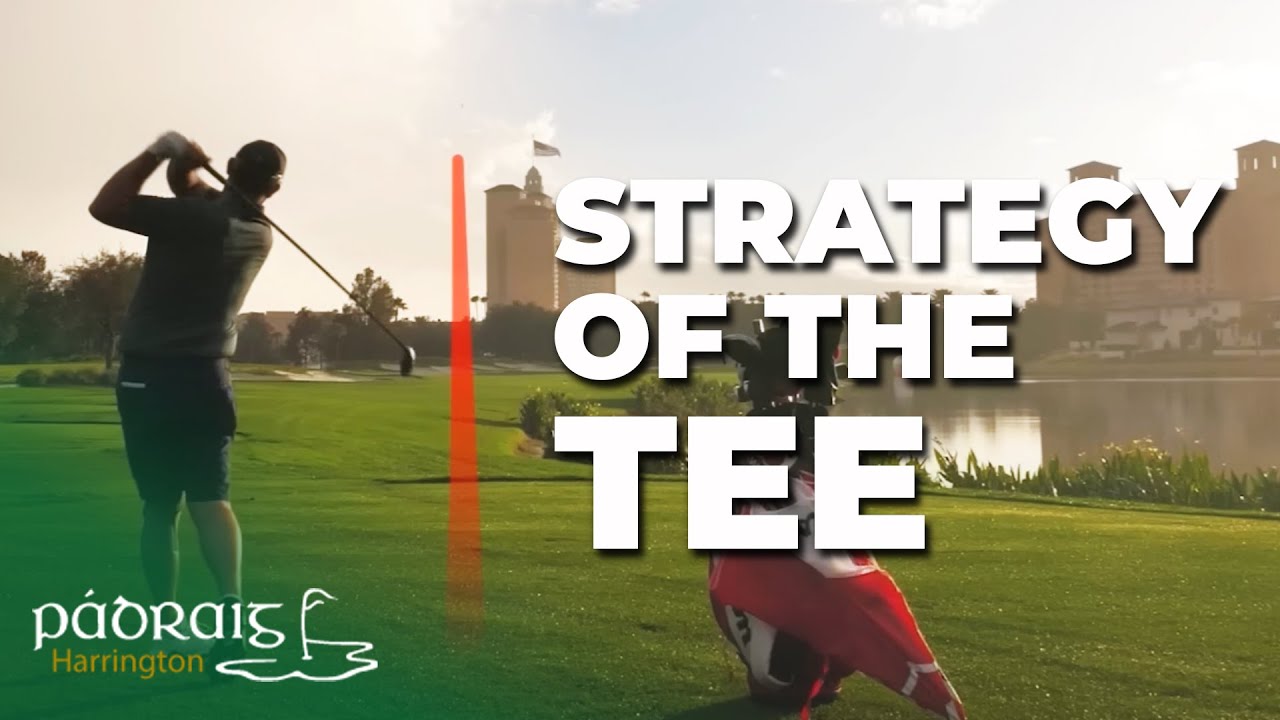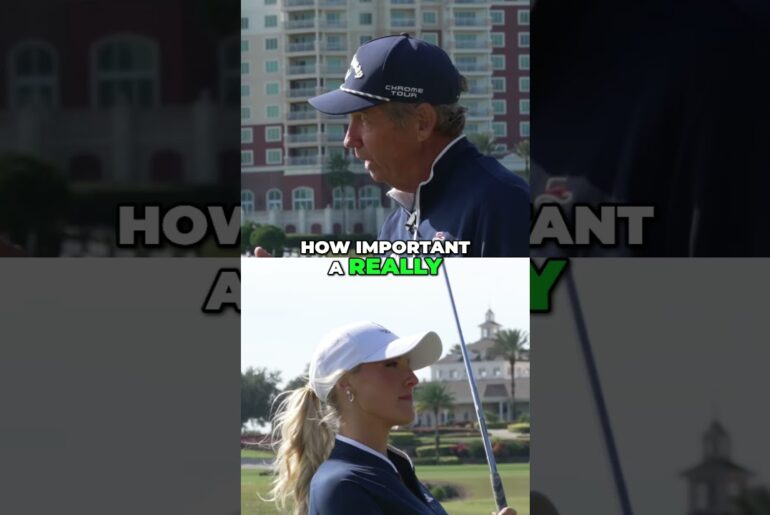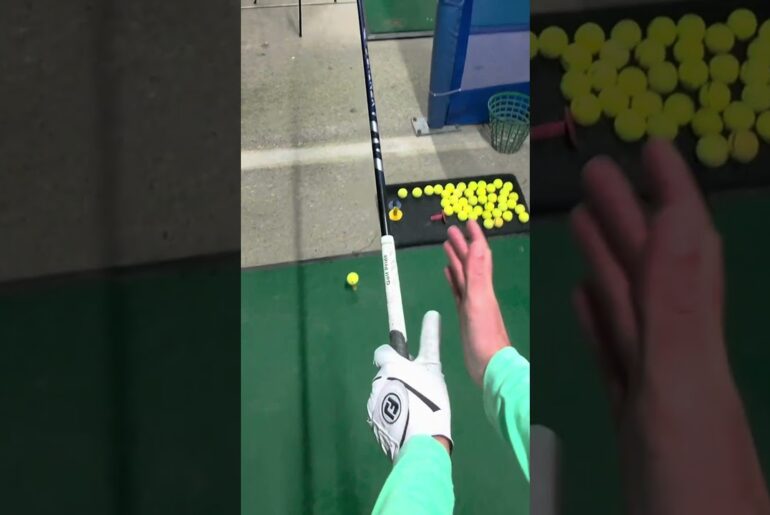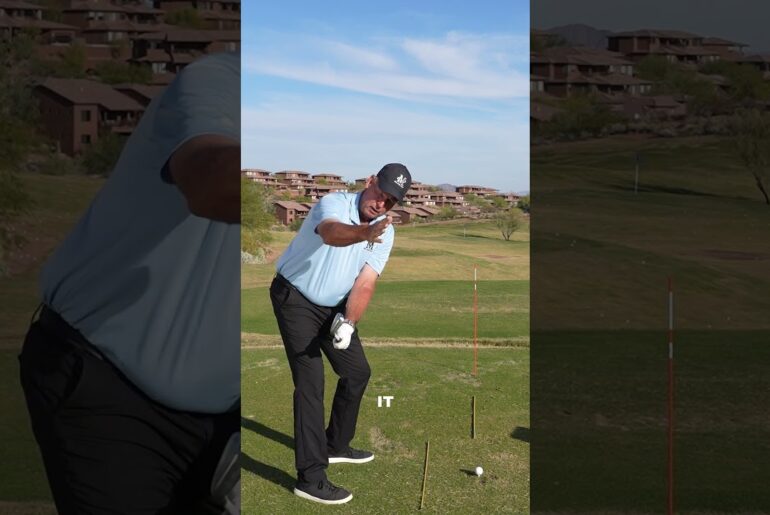In this episode of Paddy’s Golf Tips, Paddy discusses the critical importance of the strategic thinking required on tee shots as he plays the 16th hole at Grand Lakes in Orlando. He emphasizes the significance of committing to a single thought when preparing for a shot, highlighting how making decisions without hesitation or second-guessing is key to executing successful shots. Harrington also shares his approach to tackling challenging weather conditions and stresses the value of a consistent, familiar pre-shot routine to manage pressure and ensure optimum performance.
#padraigharrington #golfing #golftips #paddysgolftips #golf #feedback #strategy
SUBSCRIBE FOR MORE CONTENT: https://bit.ly/4gKoVme
About Padraig Harrington:
Born in Dublin, Padraig is a proud family man married to Caroline with two children, Patrick and Ciaran. As a three time major champion, Padraig is one of the world’s top golfers and his playing record speaks for itself. Following a very successful amateur career, including winning the Walker Cup in 1995 at Royal Porthcawl in one of his three appearances, he turned professional in September 1995.
Stay Connected With Padraig:
Facebook: https://bit.ly/40587j0
Instagram: https://bit.ly/426tmUg
X: https://bit.ly/4fSENSu
Website: https://bit.ly/4h5MGVA
Copyright Notice: This video and my YouTube channel contain dialog, music, and images that are property of Padraig Harrington. You are authorized to share the video link and channel, and embed this video in your website, or others, as long as a link back to my Youtube Channel is provided.
© Padraig Harrington
Mastering Golf Strategy: Key Tips for Success off the Tee | Padraig Harrington
https://www.youtube.com/padraigharringtonofficial
So, the last thing I want to do is get over this and go, I want to swing a bit slower. I want to take more time. Any change of mind as you’re over the ball. Any searching over the ball is disastrous. We want to be committed to whatever thought we had, and it should only be one thought. We should make it consistent and familiar. Winner of the gold medal and the champion golfer of the year is Pro Harrington. [Music] [Applause] [Music] Welcome back to Patty’s Golf Tips and we’re going to talk about strategy and routine today. H I’m here on the 16th hole at Grand Lakes in Orlando. Really good hole. Very very typical of a tour golf hole. So, you got a lake all the way down the right and you got bunkers on the left. Clearly, we don’t want to go in the lake, but the bunkers on the left, they’re kind of okay. Not the end of the world. But before we hit any shot, we got to actually even have a look at what’s at the green. So, the green sits against that lake water on the right, and it’s a very narrow green. So, the last thing we want is a long shot into this green. So, we don’t want to be hitting a six iron in from 200 yards. That would put us under a lot of pressure. We’d probably bail out. So, we have to consider that with the T-shot. So, again, looking at this T-shot, it’s about 305 yards to run out in the right. So, why would I challenge that? We’ve got the rain. And if anybody knows any when it starts raining, you’re in danger of getting water balls. If water gets between the face and the and the and the driver, between the ball and the driver face, it squirts to the right when you lose spin. So, with a lake on the right, this is a very dangerous shot. So, if I was playing this in a tournament, I would be very keen to get a 3-wood or a fivewood on this so I can get more backspin on my T-shot in order to stop it sliding off to the right. The next thing we have is a left to right wind. So, again, the windier it is, the lower we want to hit the ball. So, you know, you don’t want to get the ball up in the air and give it a chance to spin out to the right again with that lake. It’s a one shot penalty. It’s not the same as if you hit it in in a like if it bounces in, you get to drop up there. So, that’s not disastrous. We got to be aware of that. Everything about strategy is what’s the next shot. So, yeah, I I want to hit something low off this tea. It’s kind of predictable that I’m going to hit it left because of that lake on the right. As it’s raining here, I probably I’d probably put my umbrella up. H keep that club face dry is probably the biggest point. not your grip. The the club face is the most important thing. So, I know I’m going to go up this left. I know I’m going to be dragged up there. The miss is always going to be up that left side. So, the first bunker up that left for me is 275. And the second bunker, which is a little further right, is 285. So, I’m not reaching that in these conditions. Certainly with a 3-wood. It’s 310 to carry the bunkers. I could do that, but I don’t want to hit a wild shot with a lake on the right. So, I’m not going to take that on. If if this had no water on the right, I’d probably smash it up in the air and take a chance of carrying the bunker. But no, that water’s too much in play. I know I’m going to pull it kind of up that left. So, I’m going to be a lot more conservative and hit a low squeezy shot up the left hand side. In these conditions, a little far back, maybe 150 yards, I am kicking the can down a down the road here. But to squeeze it any further up in bad conditions, like if it was nice conditions and I feel great, maybe I’d hit it further up. But in these sort of conditions, no, I’m going to be conservative. I know it’s putting a little bit more trouble on the second shot, but I’m going to go with my 3-wood. Little low squeezy one up there. Don’t take too much on. I’m short of a caddy here. You know, normally I’d have my caddy here drawing the clubs and I’d be shouting at, okay, tee it down nice and low. Now, a lot starts here. So, I’ve made a decision. I’m going to hit 3-wood. I’m committed to that. I’m not saying I I’m enjoying this shot. It’s I’m like, let’s face it, a a fivewood would be an easier shot here. I’ve picked I’ve made the decision. and I’ve stuck to it right now. Once I’ve committed to this decision, now it’s all about your routine. So, one, you have to have a general acceptance that you could hit a bad shot, which I have accepted by going for the 3-wood. I’m taking some of the trouble in. And I’ve accepted that I could hit it in trouble. But I know I need to push it a little bit down there because the second shot would be too difficult if I laid up. So, I have acceptance that I’ve made this shot hard and it might go astray. Okay, now I go pick my targets. So, left to right wind, low, it’s not going to move too much. I like to pick a a like a corridor to hit down. And I’m looking here, there’s a big hotel. So, the left edge of the hotel to the right edge of the hotel. If I started in that area with a low fade, it ain’t going to get far enough to the right. So, that’ be good. It ain’t going to go in the bunker. So, now I’m going to pick an actual target in that area. And the actual target as it jumps out of me, which often happens, is the USA flag up there. So, I’m going to aim directly at that, I’m going to hit my low fade. Now, as regards the swing, for me, I’ll do a little bit of prep. Usually, three practice swings. I want to cut it. So, I’m swinging my arms across my body. Stand back. Now, the minute I walk in here, I’m going to run through it in just slow motion. So, I walk in here, I’m looking at my target. I line up to my target. For me, it’s two waggles and I go every time. The worst thing you could do is stand over this ball and start searching for anything. So the big key here is I want to walk up and whatever I’ve decided to do, I don’t want to change my mind. So it really doesn’t matter what you’re thinking about. So some of the greats Jack Nicholas said under pressure, all he did was he set up and he took the club back for 12 in nice and slow. Tom Montgomery, all he did under pressure was he felt like he just wanted to complete his back swing. two totally different motions. All I do under pressure is I focus on my target. It makes no difference what you do. What makes a difference is it being familiar and being consistent. So the last thing I want to do is get over this and go I want to swing a bit slower. I want to take more time. Any change of mind as you’re over the ball, any searching over the ball is disastrous. We want to be committed to whatever thought we had. And it should only be one thought. We should make it consistent and familiar and stick to it every time, good and bad. Especially when it’s going bad, you stick to that one thought. If you introduce new thoughts, they’ll break very quickly. And multiple thoughts is a disaster. So that’s again why we want to be pretty when we’re over the ball, we want to be pretty quick in the sense of it’s a one two go. We don’t want to be standing there searching. So for me on every shot I use the target because it’s consistent. Got my target. I’m very happy with that. In I go. Line up. One, two, and a beauty. Right down the middle. It’s amazing what the difference a dry club face makes. Uh but the main thing is I didn’t change my mind. I selected a reasonably tough shot. Not the hardest shot, but not the easiest shot. Picked my parameters for where I wanted to hit it. Remember, we’re not aiming at the middle of the fairway. We’re aiming to keep the ball out of the most trouble. And then after the biggest trouble, we’re trying to keep it out of some of the trouble, but always avoid the big trouble. That’s the lake or the outbounds or something like that. Then try and avoid the little trouble a little bit, but not massively. So, your target could be the left edge of the fairway here. Certainly, you’re definitely not trying to hit it right at the middle of the fairway here. You know, everything is left of that. And you’ll accept if the odd shot that goes in the bunker is not the end of the world. It’s not brilliant, but it’s not the end of the world. So, we’re not aiming at the middle of the fairway. We’re aiming to keep the ball out of worse trouble because it’s all about giving yourself a second shot. Really, when you get it to a difficult hole, you’re deciding everything about the next shot. I suppose it’s a bit like playing chess. It’s about the next move. This move is all dependent on what’s coming up. Once you’ve made that decision on what you’re going to do, how much risk you’re going to take because sometimes you’re going to have to take a risk. You accept it and then your routine kicks in. And your routine is about consistency and familiarity. That’s all it is. It’s about not introducing new thoughts from day to day, from shot to shot. It’s about doing the same thing over and over and over and making it so familiar that it just becomes routine. If you have a comment or suggestion about future videos, please put it in the comments below. If you enjoyed or found these videos helpful, please like or subscribe down below to encourage me to do more.








6 Comments
Good advice. Thanks.
Great analysis again Padraig , something I definitely need, forever doubting myself over the ball 👍
Padraig a video on up hill and down hill lies would be great. Cheers, keep them coming, the best golf videos on YouTube
Congratulations on the newest Major!!! Love to see a pure Open Champion show the mettle it takes! There are tour players, major winners, but Open Champions are the purest of them all!!! Will surely see you celebrating another win soon. cheers from San Antonio
Congrats 👍🏼👍🏼
Does Padraig live in Orlando? I'd love to play 18 with him or to take a personal lesson sometime. Bucket list!